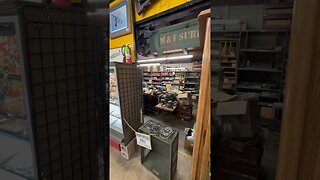Premium Only Content

Is that a CRACK? Basic skills EVERYONE should know.
Visual inspection with a light and magnifying glass is a common method used to verify cracks in various materials such as metals, ceramics, and plastics. The purpose of this method is to detect surface cracks that can lead to failure or structural damage.
The process involves examining the surface of the material under a light source and using a magnifying glass to inspect the area of interest. The light source is typically positioned at an angle to the surface to enhance the visibility of the crack. The magnifying glass is used to get a close-up view of the crack to determine its size, shape, and location.
When conducting a visual inspection, it is important to ensure that the surface is clean and free from any debris or contaminants that may obscure the crack. Additionally, the inspector should have adequate lighting and a clear view of the area being inspected.
Visual inspection with a light and magnifying glass can be a reliable and cost-effective method for verifying cracks in materials. However, it may not be suitable for detecting cracks that are too small to be seen with the naked eye or those that are located beneath the surface. In such cases, more advanced non-destructive testing methods may be necessary.
-
 1:00
1:00
Doggorunning
1 year agoWe Have More To Look at in The Supply Room! Subscribe
94 -
 LIVE
LIVE
The Charlie Kirk Show
1 hour agoAmericaFest: Day 1 | Bannon, Maloney, Posobiec, O'Keefe | 12.19.24
7,509 watching -
 LIVE
LIVE
TheAlecLaceShow
3 hours agoGuests: AG Andrew Bailey & Dr. Michael Schwartz | DOGE Shuts Down Speaker’s CR | The Alec Lace Show
152 watching -
 LIVE
LIVE
hambinooo
53 minutes agoPUBG DOMINATION
82 watching -
 1:03:06
1:03:06
The Rubin Report
2 hours ago‘Piers Morgan’ Goes Off the Rails as 'TYT' Host Attacks Dave with Nasty Insults
29.4K57 -
 1:47:50
1:47:50
Steven Crowder
3 hours agoLWC Christmas Special 2024 | Giving Back with Santa Crowder
101K203 -
 LIVE
LIVE
The Dana Show with Dana Loesch
1 hour agoTRUMP SLAMS SPENDING DEAL | The Dana Show LIVE On Rumble!
575 watching -
 35:43
35:43
Grant Stinchfield
1 hour agoThe C.R. in One Page, Anything Longer is the Deep State Exposed
3.53K2 -
 23:06
23:06
The Shannon Joy Show
4 hours ago🔥🔥Live EXCLUSIVE W/ Patrick Wood On Drones, Bitcoin, Artificial Intelligence & The Technocracy🔥🔥
5.35K2 -
 2:19:25
2:19:25
Matt Kohrs
12 hours agoMarket Chaos || The MK Show
61.9K6